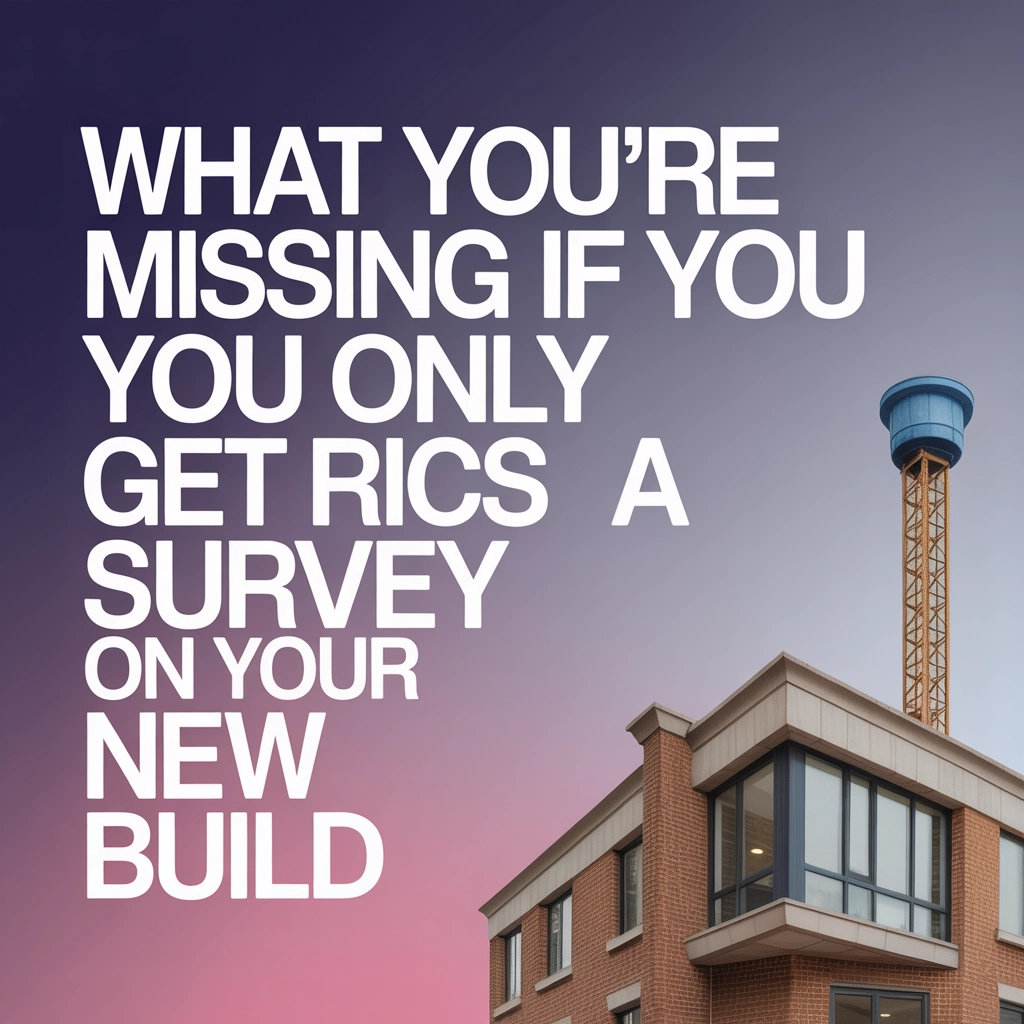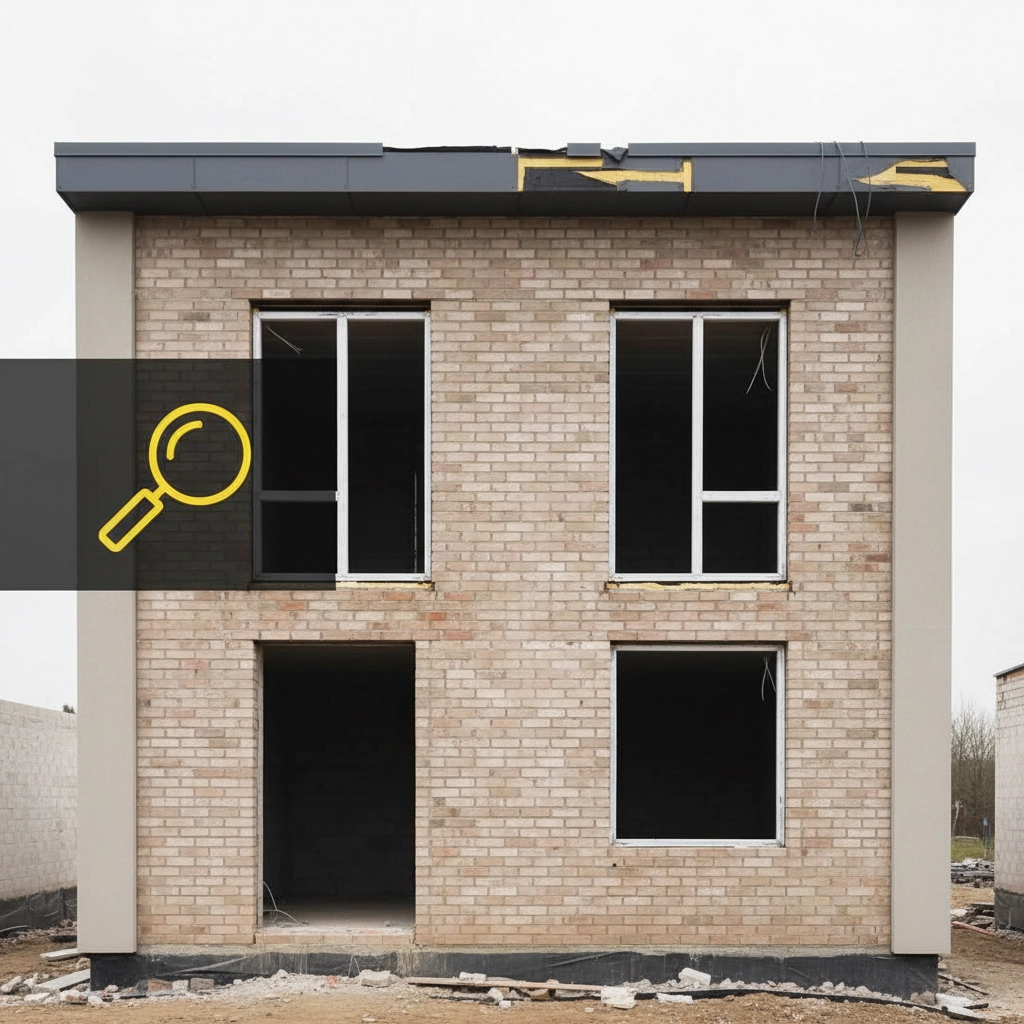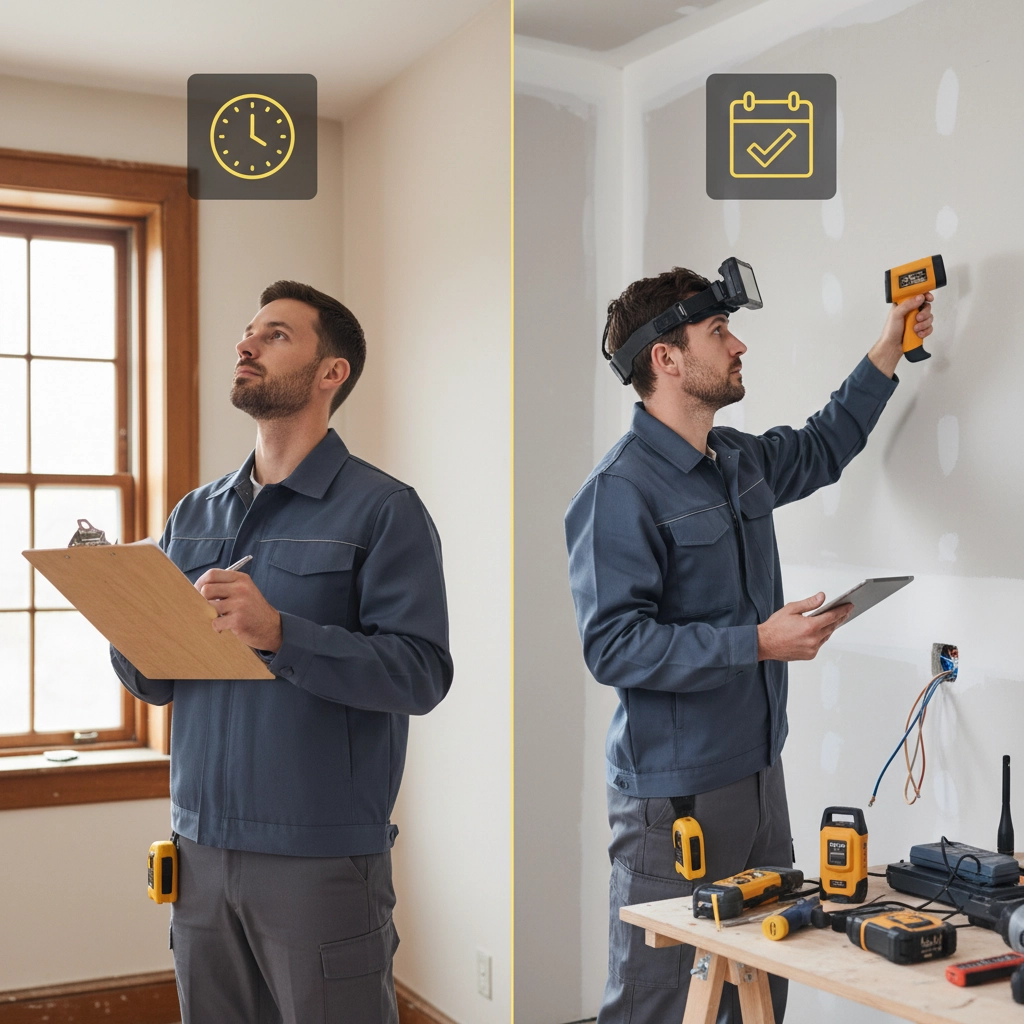What You’re Missing If You Only Get a RICS Survey on Your New Build

Bought a new build recently? Congratulations! But if you’re thinking that shiny RICS survey certificate means you’ve got everything covered, we need to have a chat. While RICS surveys are excellent for older properties, relying solely on one for your new build is like using a hammer to perform surgery – it’s the wrong tool for the job.
Let’s bust some myths and uncover what you’re actually missing when you skip the specialist snagging inspection that your New Build property really needs.
The Big Misconception: “It’s New, So It Must Be Perfect”
Here’s the thing – developers want you to believe that new builds are flawless. After all, everything’s fresh off the construction line, right? Wrong. Property Inspection data shows that the average new build contains between 120-150 defects. Yes, you read that correctly.
A standard RICS Home Inspection is designed to assess wear, tear, and age-related deterioration. But your sparkling new property hasn’t had time to show these issues yet. Instead, it’s riddled with construction defects, poor workmanship, and compliance failures that a traditional survey simply isn’t equipped to catch.

What RICS Surveys Actually Do (And Don’t Do)
RICS surveys come in different levels, but they all share one fundamental flaw when it comes to new builds: they’re backward-looking assessments. They examine what’s already gone wrong, not what was built wrong in the first place.
A Level 2 HomeeBuyer Survey will tell you about damp, structural movement, or roof issues – problems that develop over time. But it won’t identify that your kitchen units aren’t level, your bathroom tiles have gaps that’ll cause water damage, or that your electrical sockets aren’t properly earthed.
This is where specialist snagging comes in. While a RICS surveyor is trained to spot the signs of a failing roof after years of weathering, a snagging inspector knows exactly where to look for poor installation techniques that will cause that roof to fail prematurely.
The Critical Areas You’re Missing
Construction Quality and Workmanship
Your RICS surveyor might note that your walls “appear satisfactory,” but they’re not looking for:
- Uneven plastering that’ll show through your paint job
- Poorly fitted skirting boards with gaps
- Doors that don’t close properly due to frame alignment issues
- Windows with faulty seals that’ll let in moisture
These aren’t age-related problems – they’re construction snags that exist from day one.
Building Regulation Compliance
Here’s something that’ll surprise you: RICS surveys don’t specifically check building regulation compliance. They assume that if a property has a completion certificate, everything must be up to standard.
Plot twist: that’s not always the case.
Snagging specialists are trained to identify work that doesn’t meet current building standards, including:
- Inadequate ventilation systems
- Missing fire safety features
- Non-compliant electrical installations
- Incorrect insulation placement
Developer Accountability Issues
When you only get a RICS survey, you’re essentially letting the developer off the hook. You’re accepting the property “as is” without properly documenting the defects they should be fixing before you move in.
A comprehensive snagging report gives you leverage. It’s your Buyers Guide to getting issues resolved at the developer’s expense rather than your own.

The Timing Problem
RICS surveys are typically conducted after exchange of contracts, sometimes just days before completion. At this point, you’ve already committed to the purchase, and any major issues discovered create stressful last-minute negotiations.
Snagging inspections happen earlier in the process, often before legal completion. This timing gives you maximum negotiating power to ensure defects are rectified before you take ownership.
[This would be an excellent spot for an explainer video showing the timeline differences between RICS surveys and snagging inspections, and how timing affects your negotiating position.]
Real-World Impact: What This Means for Your Wallet
Let’s talk numbers. The average cost of post-completion defect rectification runs between £3,000-£8,000 per property. These are issues that could have been identified and resolved by the developer if caught during a proper snagging inspection.
Consider these common scenarios:
Bathroom waterproofing issues: A RICS survey might not identify poor waterproofing behind tiles. Six months later, you’re looking at a £2,500 bathroom strip-out and renovation.
Kitchen fitting problems: Wonky units and poor installation aren’t picked up in standard surveys. When your dishwasher starts leaking because the installation wasn’t level, that’s your problem to solve.
External defects: Missing pointing, poorly fitted gutters, or inadequate drainage might not be obvious during a brief RICS inspection but will cost you thousands in weather-related repairs down the line.

The RICS Survey vs Snagging Inspection Breakdown
What About Warranties and NHBC Cover?
“But I’ve got a 10-year warranty!” we hear you say. Here’s another myth that needs busting: warranties don’t cover everything, and they certainly don’t make getting repairs hassle-free.
Most new build warranties have extensive exclusions, particularly around:
- Cosmetic defects
- Minor defects under certain value thresholds
- Issues that “don’t affect the structural integrity”
Plus, claiming on warranties often involves lengthy disputes about whether problems are covered. A comprehensive snagging report identifies issues while the developer is still obligated to fix them as part of the sale agreement.
The Smart Approach: Complementary Inspections
We’re not saying RICS surveys are useless for new builds – they still provide valuable structural and condition insights. What we’re saying is that they’re incomplete on their own.
The smart Buyers Guide approach combines:
- Snagging inspection for construction quality and defects
- RICS survey for structural and condition assessment
- Building regulation compliance check for safety standards
This comprehensive approach ensures nothing slips through the cracks.

Red Flags That Scream “You Need Snagging”
If your new build shows any of these warning signs, a RICS survey alone won’t cut it:
- You’re buying from a developer with a poor reputation
- The property is part of a large development with tight completion deadlines
- You’ve noticed obvious defects during your viewing
- The completion date has been pushed back multiple times
- Other buyers in the development have reported issues
Your Action Plan
Before you complete on that new build, make sure you’re not leaving money on the table by missing crucial defects. Here’s what you should do:
- Commission a specialist snagging inspection alongside your RICS survey
- Document everything with photographic evidence
- Present findings to your developer before legal completion
- Ensure repairs are completed to professional standards before moving in
Remember, once you’ve got the keys, your leverage evaporates. Every defect becomes your problem to solve, your expense to bear.
The Bottom Line
Your new build might look perfect on the surface, but without proper snagging expertise, you’re gambling with your biggest investment. A RICS survey is just the start – for new builds, specialist Property Inspection is essential.
Don’t let developers hide behind the “it’s new, so it’s perfect” myth. Protect your investment with the right expertise for the job. Your future self (and your bank account) will thank you.
Ready to get your new build properly inspected? Visit our snagging services page to learn how we can help protect your investment with comprehensive new build inspections that go far beyond what standard surveys offer.

